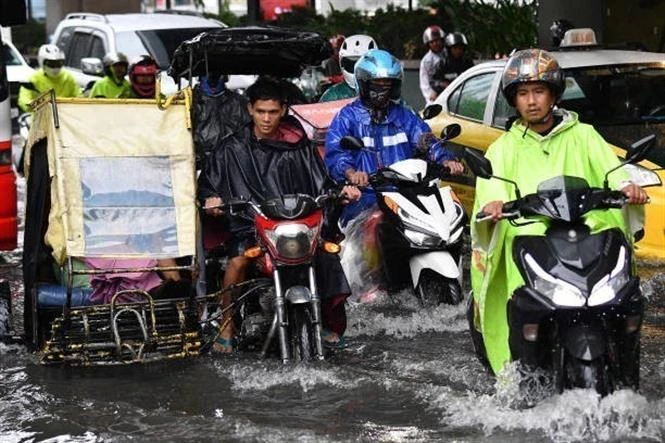
Hanoi (VNA) - Continuous rains triggered by Typhoon Gaemi and the southwest monsoon caused flooding that paralysed the Philippine capital Manila and many parts of the main Luzon Island on July 24.
Floods made many roads in the capital region impassable. Radio reported that some cars stalled when trying to cross the flooded thoroughfare.
Government offices and classes at all levels in the region were suspended on July 24. The Philippine Senate and the House of Representatives also suspended their sessions.
At least 16 flights were canceled at Ninoy Aquino International Airport on July 24 morning, airport authorities said.
The typhoon destroyed a colony of shanties near Manila Bay. However, the authorities evacuated people near this area and rivers to safety. Local authorities also evacuated residents of coastal areas in the central and southern region of Philippines. The government has yet to report deaths related to the flooding.
The Philippines' state weather bureau PAGASA said Gaemi intensified while moving northwestward over the Philippine Sea at 25 km per hour, packing 155 km per hour winds and gusts up to 190 km per hour.
The bureau said Gaemi was predicted to continue to dump rain on July 24 and flooding and landslides might occur.
It went on to say that the southwest monsoon enhanced by Gaemi will bring moderate to intense rainfall in many areas in Luzon until July 26, as well as areas in the Visayas region in the central Philippines and northern Mindanao in the southern Philippines.
Gaemi is the third typhoon to batter the Philippines this year. This island nation suffers from 20 storms each year on average, many of which are intense and destructive./.






















